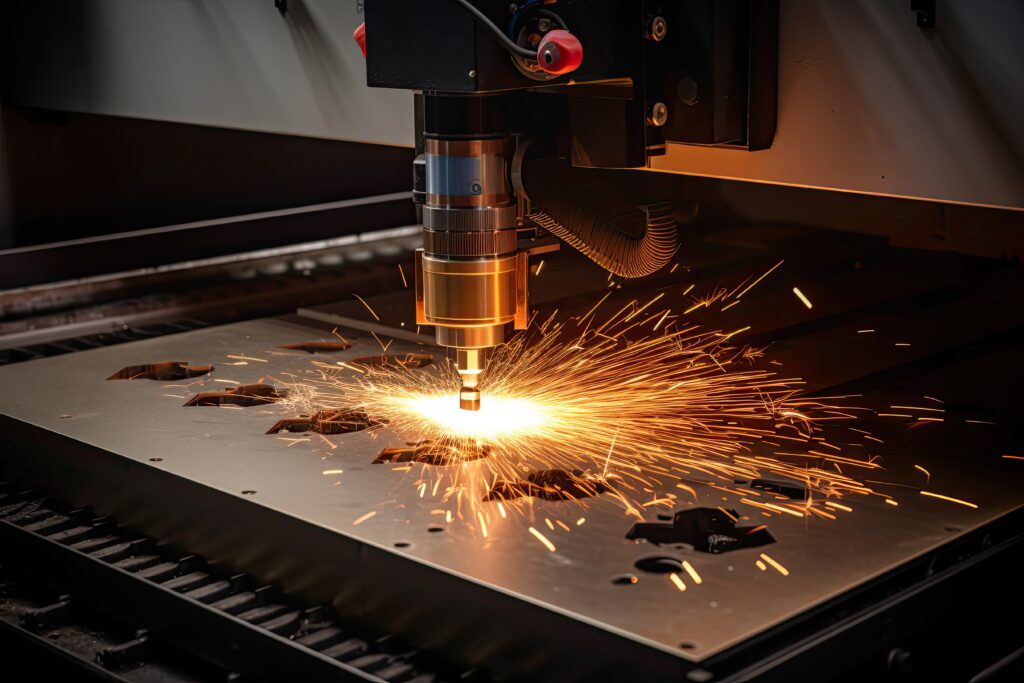
Laser cutting is a non-contact cutting process for metallic and non-metallic materials. Whether metal, plastics, glass, ceramics, wood or paper – lasers can be used to cut a wide variety of materials. Even complex plate-shaped or three-dimensional materials can be cut without the application of force and to exact tolerances.
What is laser cutting?
The laser has long since become an indispensable high-tech tool in today’s manufacturing industry. Laser cutting in particular is hard to beat in terms of precision. It enables the non-contact processing of almost all material groups – a wide variety of cutting tasks can be realized at the highest quality level. Whether plate-shaped materials or three-dimensional geometries – the laser cuts to hundredths of a tolerance in various materials such as metal, plastic, paper or stone. Especially in the field of thin sheet metal processing, laser cutting is highly economical: a wide variety of contours and high cutting speeds are possible.
How does laser cutting work?
The laser can cut, weld, drill or mark. The cutting tool is a bundled laser beam that is generated using gas or crystal. A lens system, a kind of burning glass, amplifies the light beam and concentrates it precisely on a tiny area of the workpiece – resulting in a high energy density. Where the light beam hits, the material melts or vaporizes and the cutting process begins. The removed material is blown out of the kerf by a gas jet that emerges from the nozzle together with the laser beam. The laser power and cutting speed can be flexibly adapted to the material to be processed and the current material thickness.
How is a laser constructed?
Modern laser cutting systems are highly efficient and enable the processing of almost all sheet formats and material thicknesses from a wide range of materials. Lasers are radiation sources with extremely sharply focused beams. Their most important system components are firstly the laser source, secondly the laser beam guide and thirdly the focusing optics with cutting nozzle. Lasers are differentiated according to the type of signal (continuous wave or pulsed laser) and the type of laser medium (gas, dye, solid-state or FEL laser). However, the mode of operation of the individual laser types is always similar: light amplification is achieved by absorbing and emitting energy. The resonator bundles the light beam and thus generates a very high power density. Most laser systems have a modular design and can be quickly and easily retrofitted with additional modules at any time.
What types of laser cutter are there?
Depending on the material, application and mode of operation of the laser, laser cutting can be divided into different processes:
- Laser beam fusion cutting In this process, the material is melted by the laser beam along the contour to be cut. The molten material produced during the cutting process is blown out with a gas jet under high pressure. The energy of the laser beam is supplied with pinpoint accuracy and the cutting quality depends on factors such as focus position, cutting speed, intensity distribution and gas pressure.
- Laser flame cutting Flame cutting works in a similar way to fusion cutting and is mainly used for cutting thick materials. The material is heated to ignition temperature with a high-energy laser beam and the burnt oxides are blown out of the kerf with an oxygen jet. With water jet-guided lasers, the thermal impact on the edges can be significantly reduced.
- 2D laser cutting 2D laser processing is used in particular for plate-shaped materials; fast and cost-effective processing is possible almost regardless of the material group. Even blanks with complex structures and geometries can be cut - regardless of the material thickness - and optimum edge quality and dimensional accuracy are always guaranteed. Even the smallest quantities with high quality can be produced at an economical price.
- 3D laser cutting 3D laser cutting offers almost unlimited possibilities and is used where complex 3D geometries need to be produced with absolute dimensional accuracy. Several operations such as punching, slitting, trimming or the insertion of contours of any kind are carried out in a single clamping operation. This means that even the most complex deep-drawn parts, housings, tubes, profiles or hollow bodies can be produced economically and with high precision.
- Laser beam sublimation cutting During sublimation, the material is vaporized under very high heat development, the resulting vapours are immediately blown out during the cutting process - the gas jet is not used here to blow out the kerf, but to protect the sensitive lenses and mirrors. This also prevents the formation of molten material. In this way, both organic and inorganic materials can be cut precisely and safely. The laser cuts produced are also always burr-free, which eliminates the need for mechanical reworking.
- Laser fineblanking CNC-controlled cutting with dimensional accuracy in the hundredths range is used for processing sheet metal, tubes and 3D components with a maximum material thickness of 2 mm. In this way, very small parts for the watch and jewelry industry, apparatus engineering or medical technology are manufactured extremely flexibly and highly dynamically.
- Pipe lasering This process is carried out on laser cutting machines that combine several methods of pipe and profile processing in a single work step. This means that not only round, but also square, rectangular or oval tubes can be processed with dimensional accuracy and contours can be created in the same step.

Advantages and applications of laser cutting
Laser cutting enables non-contact, precise processing of all fusible materials up to 50 mm thick in a wide variety of shapes. The technical complexity varies depending on the material group. Different laser systems are also used so that metal, plastic, paper, wood, leather, etc. can be cut with perfect cutting qualities, burr-free and without further mechanical processing.
Laser cutting requires strict health and safety measures and is associated with high system and energy costs. Nevertheless, in today’s manufacturing industry it is also of great importance at Retero GmbH, as almost all materials can be cut at the highest quality level and at high cutting speeds. Our customers benefit from our many years of experience and extensive know-how. As several work steps can be carried out in a single pass, maximum flexibility and a convincing price-performance ratio can be achieved. Please contact us at info@retero.ch to find out what is technically possible.
What cutting widths are possible with laser cutting?
Narrow cutting widths of 1.0 mm and accuracies of +/- 0.1 mm/m can be easily achieved with laser cutting. Solid-state lasers are used in micromachining, which even enable fine cuts with widths of up to 20 µm. The material, part geometry and the process used are important factors for the tolerances that can be achieved.
What is a laser cut?
Laser cutting refers to the cutting of materials by heating the material using a pulsed or continuous laser beam. The entire laser power is focused on one point and the material is precisely melted/vaporized due to the high heat development.
Laser cutting with fiber, other solid-state or CO2 lasers?
Each of the laser systems has its own strengths and different application advantages. CO2 is a rather older technology, while fiber lasers are gaining influence as technical development progresses. The advantages of fiber lasers are in particular Speed, reduced operating costs, little to no maintenance costs, long service life and three to four times greater throughput. The wavelength makes the difference as to which type of material can be processed by which laser.
Solid-state lasers are lasers whose active medium consists of a glass or crystal solid (host material). Solid-state lasers have a laser beam with high output power, combined with the optimum pulse frequency and pulse duration. They produce a laser beam with a very small focus diameter, making them the ideal choice for permanent marking in the form of serial numbers, barcodes and data matrix codes on metals. Ultra-short femtosecond pulses can also be generated with a solid-state laser.
If the materials to be cut are rather thick, CO2 lasers are preferable. CO2 lasers deliver faster initial piercing times, faster longitudinal cutting and a smoother surface quality when cutting materials over 5 mm. For applications where laser cutting of metals or material processing of stainless steel is necessary, a powerful fiber laser is required. For other materials such as plastic and rubber, both types of laser can be used for material processing.
In industry, fiber lasers are currently a complement to CO2 lasers. Due to their special properties, these solid-state lasers are predestined for the thin sheet metal sector. They enable high processing speeds and filigree cutting thanks to small focus diameters. As the power of the lasers increases, the sheet thickness that can be cut and the cutting speed also increase. In microsystems technology and medical technology, their use enables the most innovative applications.
Retero GmbH
Stadtweg 24
8245 Feuerthalen
Switzerland
